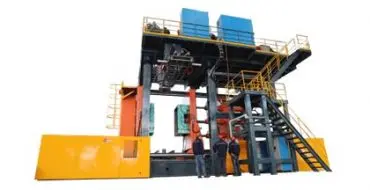Is Blow Molding Cheaper Than Injection Molding?
When it comes to manufacturing plastic products, two commonly used processes are blow molding and injection molding. Each method has its unique advantages, but cost plays a critical role in decision-making for many businesses.
In this article, we will explore and compare the cost factors of blow molding and injection molding processes to determine which one is more cost-effective.
1. Understanding Blow Molding:
Blow molding is a manufacturing process used to produce hollow plastic parts. It involves melting plastic polymer pellets and then blowing air into the molten material, forcing it to take the shape of a mold. Blow molding is commonly applied to create bottles, containers, and other similar products.
2. Understanding Injection Molding:
Injection molding is a versatile manufacturing process that involves injecting molten plastic material into a mold cavity. The material solidifies within the mold, taking the desired shape. Injection molding is widely used to manufacture complex plastic products, including automotive parts, toys, and consumer electronics.
3. Cost Factors Comparison:
a. Initial Tooling Costs:
One of the primary cost considerations in both blow molding and injection molding is the initial tooling investment required. Injection molding generally has higher tooling costs due to complex mold designs and the need for additional equipment. Blow molding, on the other hand, often requires less expensive tooling since it involves simpler molds.
b. Material Costs:
The selection of materials for the manufacturing process directly impacts the overall cost. Injection molding often uses a wider range of plastic materials, including high-performance ones, making the pricing of raw materials more variable. Blow molding commonly employs polyethylene (PE) and polypropylene (PP), which are generally cheaper compared to specialized materials used in injection molding.
c. Production Costs:
Blow molding typically has faster production cycles and requires less energy compared to injection molding. The nature of blow molding allows for the simultaneous production of multiple parts, resulting in higher production output. Injection molding, with its more complex process, can lead to slower production rates and potentially higher energy consumption.
d. Part Complexity and Volume:
The complexity of the product design and production volume influence costs in both blow molding and injection molding. While injection molding excels at complex geometries and precise detailing, it may have higher costs for low-volume production. Blow molding is often more cost-effective for larger production quantities and simpler part designs.

Choosing between blow molding and injection molding depends on various factors, primarily driven by the product requirements and expected production volume. While blow molding generally offers advantages in terms of lower initial tooling costs, cheaper materials, and faster production, injection molding excels in complex designs and offers greater material versatility.
Understanding the specific needs of your product and collaborating with experienced blow molding machine manufacturers -Yankang, can help you determine which process is more cost-effective for your project.
